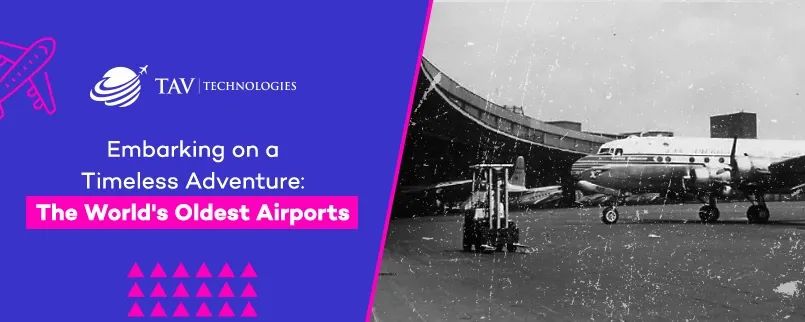
May 2023
Airports serve as gateways to the world, connecting people, cultures, and destinations. As we embark on a fascinating journey through aviation history, let's discover some of the oldest airports in the world. Not only these airports boast rich legacies, but they also reflect the remarkable evolution of aviation technologies. In this article, we will explore these iconic airports, and compare the technologies of yesterday with the cutting-edge innovations of today.
Oldest Airports and Their Foundation Dates
| Airport Name | Foundation Date | Counrty | City |
| College Park Airport | 1909 | USA | College Park |
| Amsterdam Airport-Schiphol | 1916 | Netherlands | Amsterdam |
| Berlin-Tempelhof Airport | 1923 | Germany | Berlin |
| Hartsfield-Jackson International Airport | 1925 | USA | Atlanta |
College Park Airport
College Park Airport, located in Maryland, USA, continues to operate to this day and holds the title of the world's oldest airport. Initially serving as a training ground for military pilots, it played a pivotal role in the early days of aviation. The technologies of that era were rudimentary, with aircraft primarily consisting of fabric-covered biplanes and propeller engines. Runways were often grassy or dirt surfaces.
Amsterdam Airport Schiphol
Dating back to 1916, Amsterdam Airport Schiphol in the Netherlands boasts a rich history and has evolved into one of the most technologically advanced airports in the world. In its early years, Schiphol operated with limited facilities and served as a military airbase during World War I. Today, it showcases the latest technologies, such as biometric passport control, automated baggage handling systems, and advanced air traffic control systems, ensuring seamless travel experiences for millions of passengers.
Berlin-Tempelhof Airport:
Founded in 1923, Berlin-Tempelhof Airport played a crucial role in the history of aviation, witnessing numerous milestones. In its early years, it featured grass runways and basic infrastructure. Tempelhof's significance soared during the Berlin Airlift, where it emerged as a symbol of resilience and hope, serving as a vital lifeline for West Berlin amidst the tensions of the Cold War. The airport’s closure paved the way for the creation of a magnificent public park in 2008.
Hartsfield-Jackson International Airport:
Established in 1925, Hartsfield-Jackson International Airport in Atlanta, USA, holds the distinction of being the busiest airport globally today with more than 93 million passengers. Over the years, it has witnessed a significant transformation in technology and infrastructure. The transition from piston-engine planes to jet-powered aircraft revolutionized air travel, offering greater speed and efficiency. Modern airports now incorporate advanced navigation systems, state-of-the-art security measures, and expansive runways to accommodate larger aircraft.
Then and Now: Technological Contrasts
The early airports relied on manual processes, limited navigation aids, and simple communication systems. Today, airports are equipped with sophisticated technologies, including radar systems, advanced security screening equipment, automated check-in kiosks, and real-time flight information displays. Modern airports leverage artificial intelligence (AI) and data analytics to enhance efficiency and passenger experience.
Airports are also prioritizing sustainability. Energy-efficient lighting, renewable energy sources like solar panels and wind turbines, and eco-friendly construction materials contribute to a greener future. Waste management systems are optimized for recycling and waste reduction.
Exploring the oldest airports in the world offers us a glimpse into the captivating history of aviation. These airports have not only stood the test of time but have also embraced technological advancements, showcasing the remarkable progress in aviation over the years.
